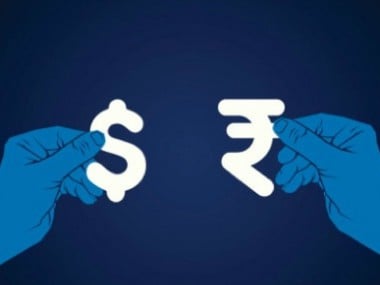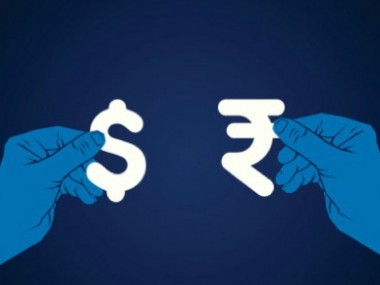Editor’s note: The Indian rupee has crashed past the 72-mark against US dollar and continues to be on a roller coaster ride. The sudden fall has caught the government and off central bank off-guard. High volatility in global crude oil prices and ballooning current account deficit figures back home have been blamed for Rupee’s free fall. Does rupee at 72 rings alarm bells to the Indian economy or is there an opportunity in the currency crisis as Narendra Modi government claims? This is the third part in a series in Firstpost where experts examine the economic impact of Rupee fall. In economic analysis no phenomenon has a singular outcome in terms of effects and hence it is but natural that it is hard to find a single-handed economist. There are always two sides to the issue and the same holds for the effects of a weaker rupee. But it is always possible to take a consolidated view on whether the gains overwhelm the losses or vice versa, which is the approach taken here when addressing the question of whether the rupee depreciation at the end of the day will have a net positive effect or not. It has been maintained for a long time that the rupee has been at a sub-optimal level where continuous appreciation has affected the competitiveness of our exports. Those who hold this view will be happy over the present rate of depreciation and would view the current fall as a much-needed correction in the value of the rupee. The first part of the argument is theoretically sound which says that the weaker rupee helps exports as at the same rupee price, a lower dollar price can be charged in the global market which helps exports. However, for it to work, there are two caveats that must hold. The first is that the elasticity of exports with respect to price must be high, meaning thereby that when prices fall, demand for Indian exports increase. This argument has not been supported in the past as most of the goods that we export have fairly inelastic demand like chemicals, textiles, handicrafts, agri products, etc. In fact, global growth prospects have a better linkage with our exports growth. Therefore, while higher exports may result at the margin for some commodities, it would not be generalised. [caption id=“attachment_5153451” align=“alignleft” width=“380”]  Representative image.[/caption] The second is that for the link between depreciation and exports to really get established it has to be the case of the rupee weakening in a dominant manner. This is where the movements in other currencies also matter. It has been observed that while the rupee had fallen, the rate of depreciation is still lower than that of the currencies in Latin America, Africa, Turkey, China. It is only the East Asian economies that have withstood the free fall of currencies vis-a-vis the dollar. Hence, for the competitiveness story to work out, it is essential that the rupee must fall really sharply to out-compete others. But this has not happened. There are more concerns of a weaker rupee across the macroeconomic spectrum. First, as our imports are always higher than exports, the net impact on trade balance is always negative in rupee terms. When gold was a dominant part of imports, it was possible to argue that demand would come down when the rupee value was higher. But not so presently, as gold imports have come down significantly since 2013-14. As there are no physical curbs on imports, the import bill especially of oil products would increase sharply. Second, as a fallout of this phenomenon, the pressure on prices would be higher as imports-led inflation increases. This has already been witnessed in the crude oil complex set of goods and services which will trickle down to other products such as machinery, electronics, consumer products etc, which get into the inflation indices. Third, as inflation rises and the contribution of imported inflation soars, the Reserve Bank of India (RBI) will be flagging inflation concerns, and the focus would change to a weaker rupee driven inflation from the present contours of minimum support price (MSP), home rent allowance components. This means that interest rates will only rise and at best will remain unchanged as inflationary threats increase over time. Add to this, when RBI intervenes by selling dollars it calls for monetary adjustment as liquidity falls which has to be replenished through open market operations (OMOs). Fourth, companies which have forex exposure will have to make provision for higher costs or losses in the absence of hedged positions. This holds for both imports as well as borrowings. As loans taken in dollars have to be serviced by converting rupees the outflow for debt service and repayments will increase. Correspondingly the option of borrowing from the ECB market becomes dicey as if the rupee is further expected to fall, there would be a higher cost attached to these loans. Fifth, a weaker rupee invariably leads normally to a decline in the forex reserves, which is a net summation of the balance of payments situation. This will also be hastened in case the RBI sells dollars in the market to steady the rupee at times – which has been the case in the last 4 months. This makes the external situation more vulnerable. Sixth, at the individual level, cost of dollars going up means higher cost of travel, education and health; and hence the cost of net import of services will increase. Therefore, the so-called loss for the economy is definitely higher when the rupee weakens sharply.  To this must be added the qualification that there would be some collateral benefits which will flow as part of the rupee becoming weaker. First, the Foreign Direct Investment (FDI) and Foreign Portfolio Investment (FPI) value invested will increase in rupee terms. This is a big positive for us though the dollar value may not go up. This is so because when funds or countries make allocations for their investment, they look at distribution of a pie denominated in dollars or any other foreign currency. A weaker rupee may not be a consideration as the allocation would be, say $10 billion for India. In fact, expectations of a weaker rupee relative to other markets can cause such allocations to come down instead of increasing. Second, higher interest rates which affect companies negatively is a good collateral effect for savers who have been confronted with low returns on deposits and other debt instruments. Similarly while the quantum of remittances or software receipts do not increase as earnings per se do not go up, the higher rupee value would be good for the families in case of remittances or companies in the case of software receipts. On the whole, from the macroeconomic perspective, a weak rupee is not good news as it weakens external balance, makes the economy more vulnerable to extraneous forces, does not appease the rating agencies and affects company profit and loss accounts. That’s why economists always talk of stable currencies with only gradual movements in either direction. (The writer is Chief Economist, CARE Ratings) Read Part 1 here: Rupee in free fall: A weaker currency may be a temporary setback, but can check Chinese imports Part 2: Rupee crashes past 72: Currency mayhem signals a deeper problem; India must think long-term, find solutions within
It is only the East Asian economies that have withstood the free fall of currencies vis-a-vis the dollar.
Advertisement
End of Article
Written by Madan Sabnavis
Madan Sabnavis is Chief Economist at CARE Ratings. see more


)

)
)
)
)
)
)
)
)



